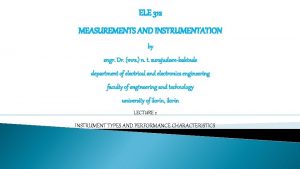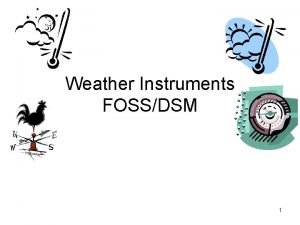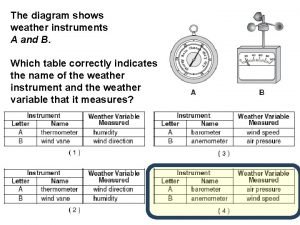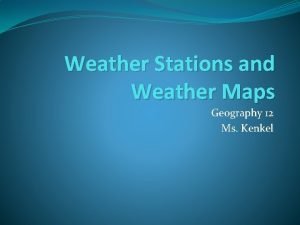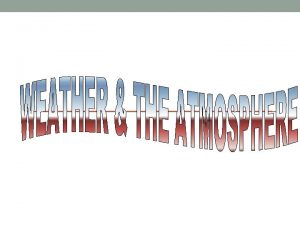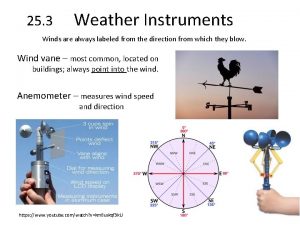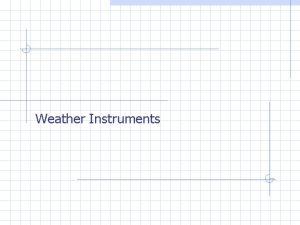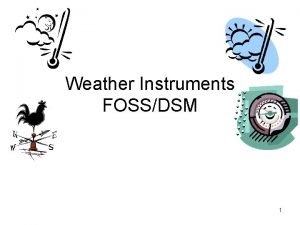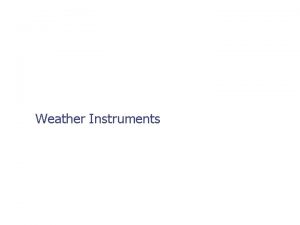Weather Instruments What is the name of the














- Slides: 14

Weather Instruments What is the name of the instrument? What does it measure? What does it look like? How is it used in making forecasts? What is an example of our data that was measured by this instrument? S 4 E 4. Students will analyze and collect weather data to predict weather events and infer patterns. a. Identify weather instruments and explain how each is used in gathering weather data and making forecasts (thermometer, rain gauge, barometer, wind vane, anemometer). Ann Newland’s class - 2011

Anemometer and Wind Vane

Anemometer • An anemometer measures wind speed. • A change in wind speed may mean that the weather is about to change.

Wind Vane • A wind vane or wind sock measures wind direction. • Knowing the direction the wind is blowing from helps forecast the weather. Wind blowing from the south brings warmer weather and wind blowing from the north brings colder weather.

Hygrometer

Hygrometer • A hygrometer measures humidity or the amount of water vapor in the air. • An increase in humidity often means it’s about to rain.

Rain Gauge

Rain Gauge • A rain gauge measures the amount of precipitation. • Meteorologists study the patterns of precipitation and other weather data to make weather predictions.

Barometer

Barometer • A barometer measure the air pressure, which is also called barometric pressure. • A change in air pressure often means the weather is about to change. • A decrease in barometric pressure often indicates the presence of warmer, more humid air, and a greater chance of rain. • An increase in barometer pressure often occurs just before colder air arrives. A rising barometer means lower humidity and less chance of rain.

Thermometer

Thermometer • A thermometer measures air temperature. • If the air cools down during the day or warms up in the evening, this change is a sign that rain may fall soon.

Weather Log - Our Data

Weather Graphs – Our Data
 Active instrument example
Active instrument example Indicating instruments and instruments with a signal output
Indicating instruments and instruments with a signal output Name all rays
Name all rays Importance of weather instrument
Importance of weather instrument Weather instruments
Weather instruments The diagram below shows weather instruments a and b.
The diagram below shows weather instruments a and b. Weather station in geography
Weather station in geography Instruments used to measure weather
Instruments used to measure weather Weather instruments
Weather instruments Tools to measure weather
Tools to measure weather Anemometer
Anemometer Station model weather symbols
Station model weather symbols Tongue twister weather
Tongue twister weather Short poem about seasons
Short poem about seasons Its stormy
Its stormy

